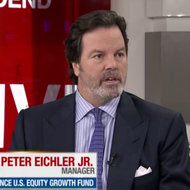Deliberately bloating your own tax bill isn’t a common strategy, of course. To the contrary, an army of lawyers, accountants, lobbyists and executives is at work throughout corporate America, finding legal ways to minimize taxes and retain profits. One common approach for multinational corporations is to stash foreign earnings in low-tax countries, keeping the money out of the reach of the Internal Revenue Service.
But companies like Apple, which hold mountains of cash overseas, have come under a chorus of criticism for not doing something useful with their stranded money.
Robert A. Olstein, a forensic accountant turned money manager based in Purchase, N.Y., has an elegantly simple solution for Apple, as well as for Cisco Systems and Microsoft, which also keep billions of dollars abroad: he says they should repatriate the wealth — which would require them to pay billions in fresh United States taxes.
“What’s wrong with paying taxes?” asks Mr. Olstein, whose flagship mutual fund, the Olstein All Cap Value fund, holds shares in all three of these companies. “I pay taxes. These companies should be paying what they owe, too.”
Mr. Olstein’s analysis isn’t altruistic. He says that after paying taxes, the companies should use the remaining cash to buy back shares — a move that he calculates should drive up their price by at least 20 percent. As he sees it, by avoiding taxes and letting the money sit unproductively, they are sabotaging themselves.
“These companies have been letting the tail wag the dog,” he says. “They’ve been letting taxes determine their strategy, and that’s a basic mistake. You should never do that. You should have a good solid moneymaking strategy first, and only then worry about taxes.”
Tax avoidance is only one of the reasons for the big buildup of cash by American companies. According to a recent report, “Why Are Corporations Holding So Much Cash?” by the Federal Reserve Bank of St. Louis, risk aversion is another.
Kathleen M. Kahle, a finance professor at the University of Arizona who has studied the issue extensively, said, “As risk increases, executives get nervous and they want to hold cash for a rainy day.” Tech companies that rely on big research and development expenditures to spur innovation are inherently risky, she said, “so it’s not surprising that a company like Apple would build up a lot of cash.” But, she added, “I have little doubt that the United States corporate tax code,” which imposes a 35 percent marginal tax on domestic corporate earnings, “is causing companies like Apple to hold cash overseas.”
Whatever the reason, United States corporations have parked staggering sums abroad. Last year, analysts at JPMorgan Chase estimated that accumulated offshore profits for American companies amounted to $1.7 trillion. This month, Bloomberg News estimated that the mountain of cash had grown to more than $1.9 trillion.
Mr. Olstein says that while his logic should apply to a broad range of companies, he has focused on Apple, Cisco and Microsoft. “We’re shareholders of those three and know them well,” he said. “If they were investing it productively, fine. If they have a productive use for it now, fine, let them do it. But just leaving it there to avoid taxes? Come on.”
Mr. Olstein adds that he has no informed opinion about whether the domestic corporate tax rate is appropriate or whether it will eventually be lowered. But after President Obama’s re-election, he said, “it would seem that the probability of a major cut in the tax rate soon is unlikely.” If corporate executives believe that a lower rate is imminent, they should reveal their insights to shareholders, he said; otherwise “it’s time to accept reality.” Furthermore, he said, “We’ve got roads and bridges that need to be fixed and bills that need to be paid and that tax money would help.”
He says his position is fundamentally selfish, however, centered on what is best for shareholders.
He’s not opposed to another approach: moderately increasing these companies’ dividend yields. That would help siphon off at least some newly generated cash or some cash held domestically. But it wouldn’t liquidate the foreign cash hoards. David Einhorn, the hedge fund manager, has suggested that Apple issue a novel type of preferred stock intended to tap the foreign cash, which would pay guaranteed dividends. But Apple has rejected that proposal.
Article source: http://www.nytimes.com/2013/03/24/your-money/how-companies-could-unlock-stashed-foreign-earnings.html?partner=rss&emc=rss


